HKJ
Flashaholic
[SIZE=+3]Folomov A1[/SIZE]
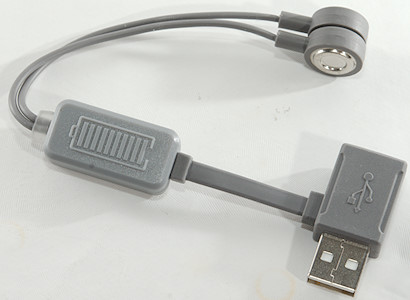
Folomov is new on the charger market and has started with some fairly powerful chargers. This is a very small charger and power bank.



The box lists lot of specifications, battery types and features, there is only the charger in the box.
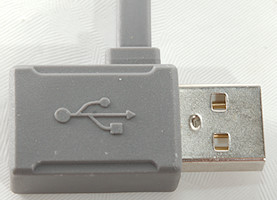
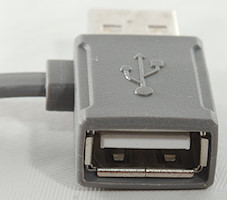
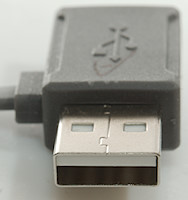
Input and output is in the same block and is basically a pass through connector.

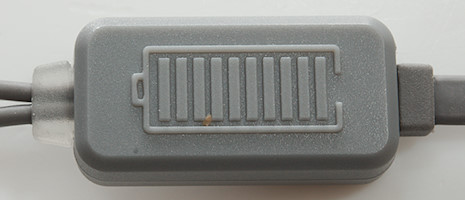
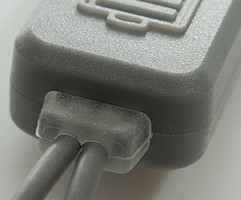
The electronic is in this block, the gray plastic is partly transparent and where the wires go out to the battery is a fully transparent piece of plastic. This makes it possible to see the internal leds:
Blinking green: Charging or no battery connected
Steady green: Battery full
Blinking blue: Usb output is delivering power.
The green led will only light up when usb power is supplied to the charger.
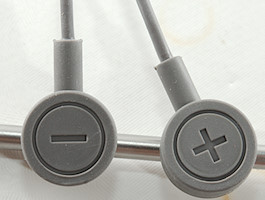
The magnetic connection to the battery with clearly marked polarity.
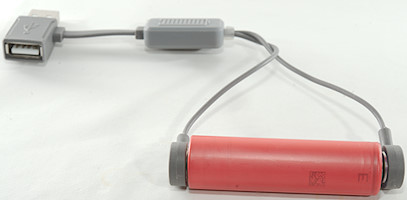
Connected to a battery.

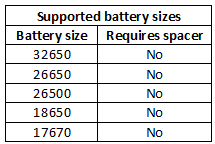



The charger can handle just about any size battery, including most flat top cells, but the current is too large for regular use on smaller cells, except some IMR types.
[SIZE=+2]Measurements[/SIZE]
[SIZE=+1]Charging[/SIZE]
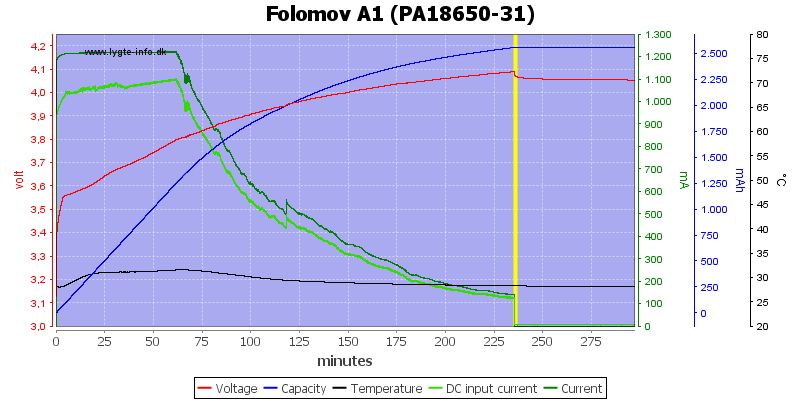
The charge current starts at around 1.2A and termination current is around 150mA, this is fine for larger cells and for some small IMR cells.
There is a problem with the voltage, it stops charging at 4.1V, it is way to low.
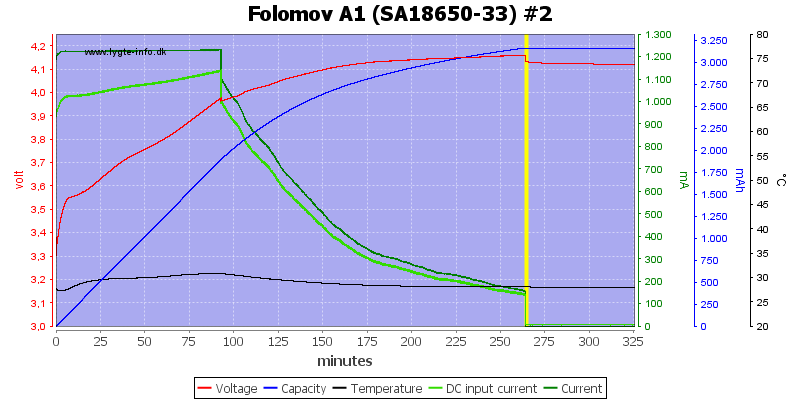
I got two for testing, the second one stops at 4.15V, it is better, but not perfect.
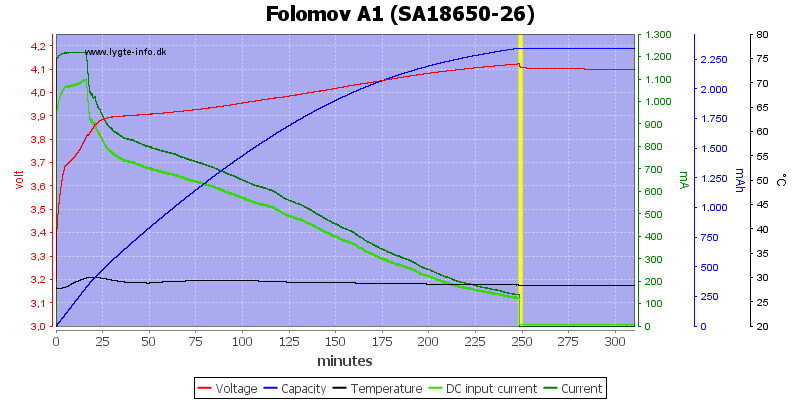

These two cells looks fine enough, except the final voltage is too low.
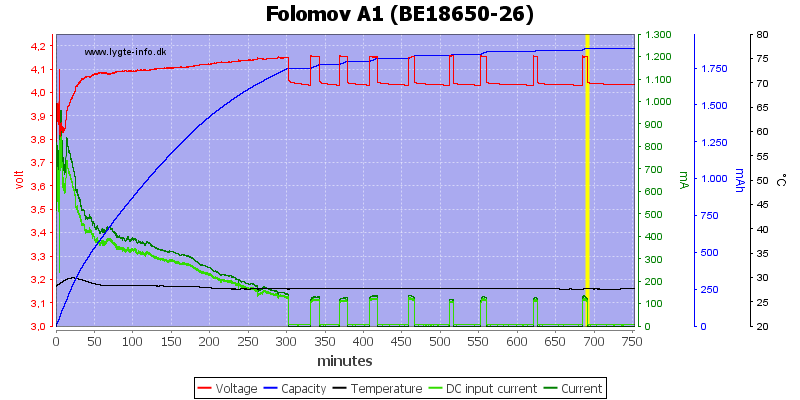
With this older cell the charger restarted a couple of times due to voltage drop.
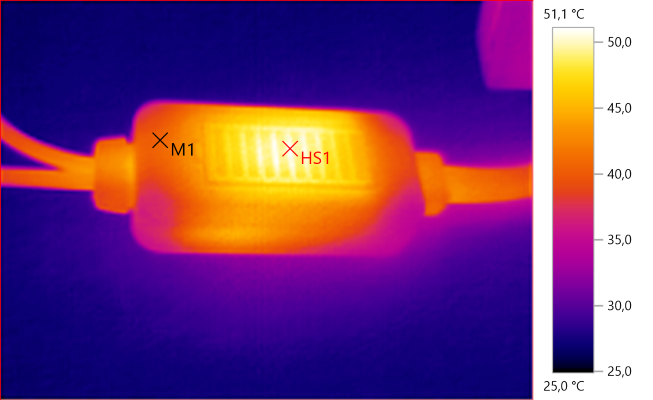
M1: 40,6°C, HS1: 51,1°C
The charger stays fairly cool.
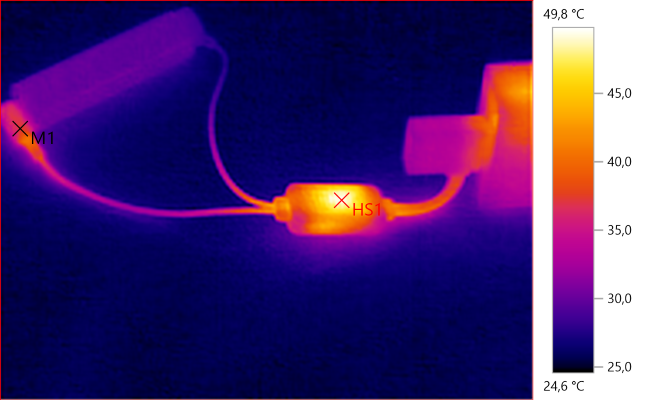
M1: 37,5°C, HS1: 49,8°C
The connection to the plus warms up a bit, probably because it has a bit of resistance.
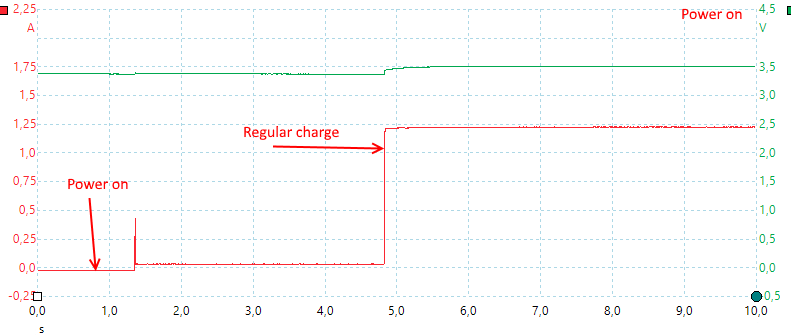
The charger takes about 4 seconds to start.
[SIZE=+1]USB output[/SIZE]
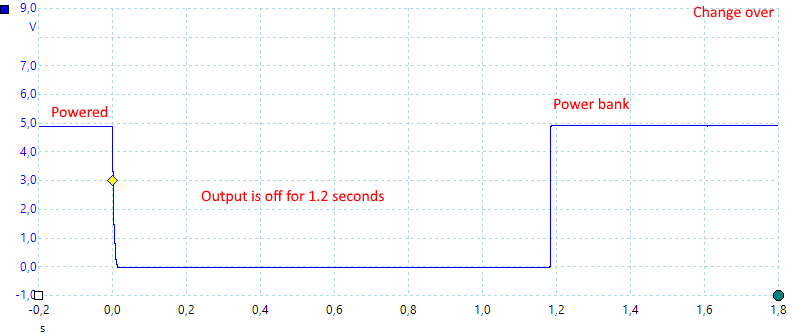
When input power is switched off it takes some time before the power bank functions will take over.
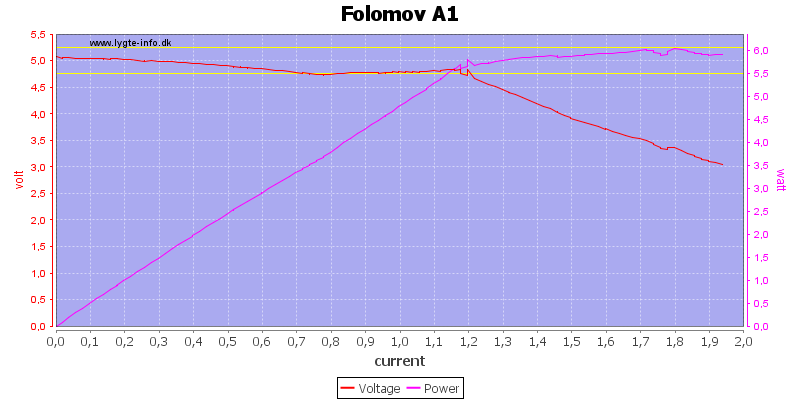
The power bank function can deliver about 1.2A before the output drops, but the voltage is at the low end for a usb charger.
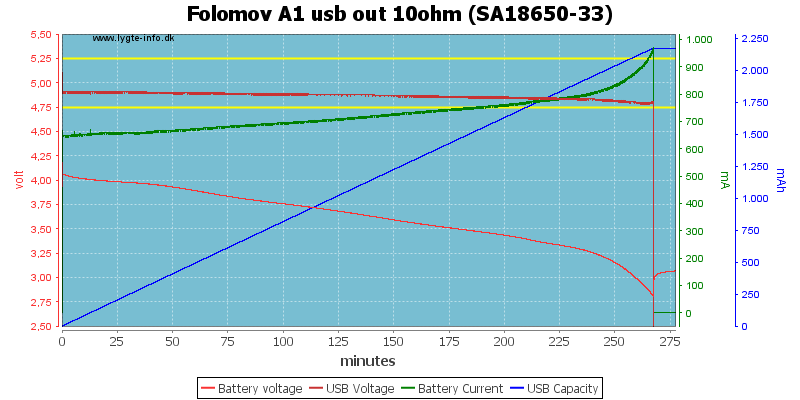
With a 10ohm load (0.5A) the output voltage is nearly stable until the battery is empty.
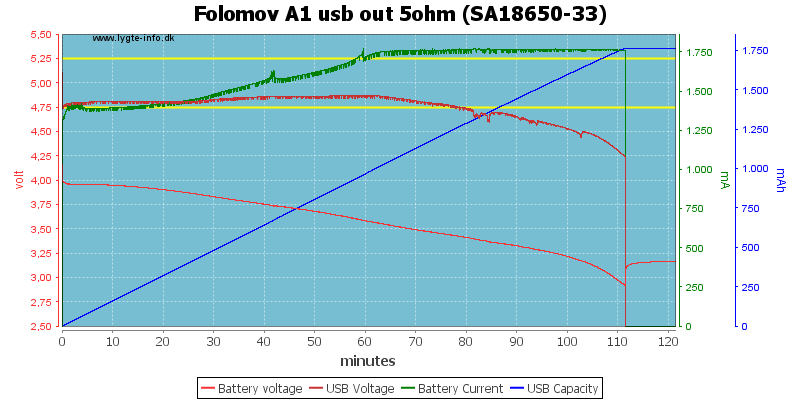
But at about 1A (5ohm) the output cannot be maintained until the battery is empty.
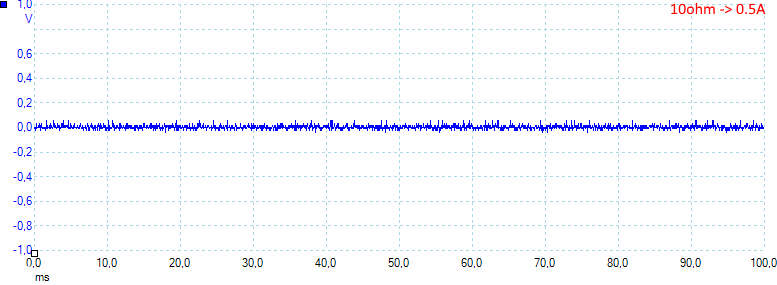
At 0.5 the noise is 11mV rms and 106mVpp
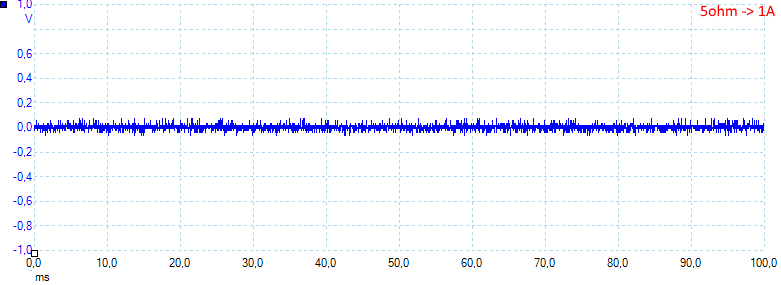
At 1A the noise is 19mV rms and 172mVpp
[SIZE=+2]Conclusion[/SIZE]
This type of charger do not take up much space, but there are some limitations, here the current is too high for small cells.
Adding a power bank function to the charger is an interesting idea, it works fine, but it will not charge a smart phone at high speed.
The charge voltage is rather low, it can be used in an emergency, but is not really good enough for a regular charger.
The same with the usb output voltage, I would also a liked that a bit higher.
Due to the low voltages I will only call it fairly good.
[SIZE=+2]Notes[/SIZE]
The charger was supplied by a Folomov for review.
Here is an explanation on how I did the above charge curves: How do I test a charger

Folomov is new on the charger market and has started with some fairly powerful chargers. This is a very small charger and power bank.



The box lists lot of specifications, battery types and features, there is only the charger in the box.



Input and output is in the same block and is basically a pass through connector.



The electronic is in this block, the gray plastic is partly transparent and where the wires go out to the battery is a fully transparent piece of plastic. This makes it possible to see the internal leds:
Blinking green: Charging or no battery connected
Steady green: Battery full
Blinking blue: Usb output is delivering power.
The green led will only light up when usb power is supplied to the charger.

The magnetic connection to the battery with clearly marked polarity.

Connected to a battery.





The charger can handle just about any size battery, including most flat top cells, but the current is too large for regular use on smaller cells, except some IMR types.
[SIZE=+2]Measurements[/SIZE]
- Power consumption when idle is up to 6mA from usb (Average 3.3mA).
- Charger will charge a LiIon with 0.02mA when full.
- Charger will discharge a LiIon with 0.1mA when not powered.
- The charger will charge from 0V with about 200mA
- Charger will restart if battery voltage drops to about 4V.
- Charger will restart if battery is removed or power is cycled.
- It can handle up to about 150mm long cells
- Weight: 20.8g
[SIZE=+1]Charging[/SIZE]

The charge current starts at around 1.2A and termination current is around 150mA, this is fine for larger cells and for some small IMR cells.
There is a problem with the voltage, it stops charging at 4.1V, it is way to low.

I got two for testing, the second one stops at 4.15V, it is better, but not perfect.


These two cells looks fine enough, except the final voltage is too low.

With this older cell the charger restarted a couple of times due to voltage drop.

M1: 40,6°C, HS1: 51,1°C
The charger stays fairly cool.

M1: 37,5°C, HS1: 49,8°C
The connection to the plus warms up a bit, probably because it has a bit of resistance.

The charger takes about 4 seconds to start.
[SIZE=+1]USB output[/SIZE]
- Blue light will turn on at around 22mA draw from usb output.
- Usb output is coded as Apple 2.1A
- Charger will discharge a LiIon with 0.1mA when not powered.
- Usb input current is charger current + any usb output current
- It cannot be used as a UPS

When input power is switched off it takes some time before the power bank functions will take over.

The power bank function can deliver about 1.2A before the output drops, but the voltage is at the low end for a usb charger.

With a 10ohm load (0.5A) the output voltage is nearly stable until the battery is empty.

But at about 1A (5ohm) the output cannot be maintained until the battery is empty.

At 0.5 the noise is 11mV rms and 106mVpp

At 1A the noise is 19mV rms and 172mVpp
[SIZE=+2]Conclusion[/SIZE]
This type of charger do not take up much space, but there are some limitations, here the current is too high for small cells.
Adding a power bank function to the charger is an interesting idea, it works fine, but it will not charge a smart phone at high speed.
The charge voltage is rather low, it can be used in an emergency, but is not really good enough for a regular charger.
The same with the usb output voltage, I would also a liked that a bit higher.
Due to the low voltages I will only call it fairly good.
[SIZE=+2]Notes[/SIZE]
The charger was supplied by a Folomov for review.
Here is an explanation on how I did the above charge curves: How do I test a charger
Last edited:

